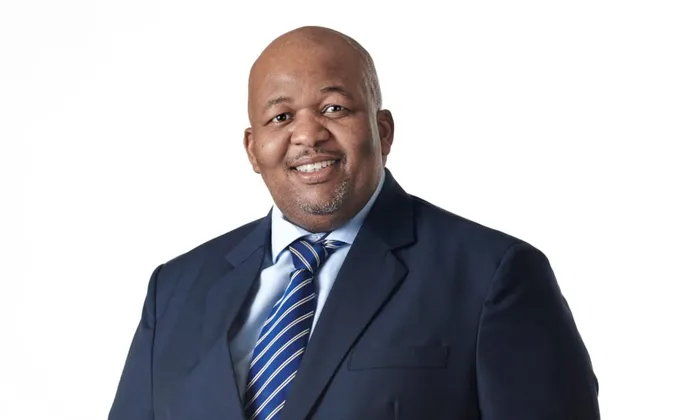We can’t say load shedding is completely behind us, says Eskom CEO Dan Marokane

Eskom Group CEO, Dan Marokane. SUPPLIED.
Eskom on Friday said it had stepped up its generation and achieved its target of keeping unplanned outages consistently around 12 000MW, with a low of 9 500MW at some point, though the spectre of load shedding was not completely behind after 80 days without interruption.
Eskom Group CEO, Dan Marokane, said the entity was presently comfortable with the progress it had made on the turnaround plan, which had been in the offing since March last year to result in the present efficiencies.
“We have said this before, load shedding remains a risk, we are not yet where we have comfortably put it behind us and therefore whatever we do we should bear that in mind,” Marokane said during a briefing on his 100 days in office.
“Equally important is that some of our customers will be coming under pressure as far as carbon tax coming in from 2030 going forward. What we do today has to go a long way to address that aspect. It is within this dimension that we got to a point that we settled on adaptations and confirmations of parts of our strategy.”
Marokane said the improved performance had also had a positive impact on Eskom’s financials, allowing the utility to claw back R4 billion in savings on diesel to run its Open-Cycle Gas Turbines (OCGT) in the current financial year.
“As I have said before, in order for us to have a comfortable winter, we need to stay below 15 000MW of unplanned losses, in the last two months of the four we spoke about,” he said.
“We have averaged about 12 000MW of unplanned losses, that gives us some comfort to deal with the demand when it increases especially in the last 10 days when the cold snap started coming in.”
Marokane said the first 100 days had been focused on assessing the effectiveness of the Generation Operational Recovery Plan.
Another focus was on reviewing the progress on the implementation of Eskom’s unbundling and engaging with internal and external stakeholders to create and build alignment, as well putting in place the building blocks for the creation of a competitive and sustainable Eskom.
“This performance comes from a sustained multi-dimensional program consisting of adequate human resources, aggressive planned maintenance on the back of financial certainty, the use of Original Equipment Manufacturers (OEMs) for critical systems, and progressive implementation of interventions in response to the VGBe findings,” he said.
Marokane also said Eskom was in full operational mode with plans to launch the National Transmission Company of South Africa (NTCSA) on 1 July.
“As part of incorporating the lessons learned from the unbundling of the transmission business, Eskom is concluding the process of augmenting our internal resources with external support for the focused unbundling project management unit to drive efficiencies for the remainder of the program,” he said.
“This expected to enable a faster execution of the unbundling process in line with international trends.”
According to Marokane, Eskom would focus on increasing the Energy Availability Factor (EAF) to 70% in the next 12 to 36 months, returning more than 2 500MW in capacity to the grid by March 2025, and developing an executable initial pipeline of at least 2 000MW of clean energy projects by 2026.
Other priorities include re-baselining the cost trajectory and improving efficiencies, advocating and pursuing a sustainable solution on municipality debt, delivering the unbundling of the Distribution and Generation divisions, and accelerating the implementation of initiatives to enable a Just Energy Transition.
“There is quite a lot of headwinds we are experiencing and some will emerge in the next two years as the reforms in the industry take shape,” Marokane said.
“Our focus is beyond today, beyond load shedding, setting up this business for its next version. We have a good base to work on.”
Eskom chairman, Mteto Nyati, said Marokane was fulfilling the mandate by the board to review Eskom’s Generation Recovery Plan and customise it to his leadership style, oversee the unbundling of Eskom to the three divisions, as well as improve stakeholder engagement.
Marokane said Eskom would in the next two weeks also go to market to source solar PV providers for the repurposing and recommissioning of the Komati Power Station as a renewable energy provider.
His engagement with stakeholders has seen him address over 10 000 employees in person – one quarter of the entire workforce - as well as engage over 200 stakeholders in the areas of government, organised business and labour, original equipment manufacturers and financial institutions.
This process was used to create awareness and alignment on the tactical shifts required for the strategic direction of the business, and to further improve engagement with our employees.
“We are putting the building blocks in place to rebuild trust and credibility in Eskom through transparent performance, with the intent to re-affirm the company as worthy of further future investment as we undertake our strategic initiatives,” Marokane said.
“It is our intention to remain a critical player in South Africa’s evolving future energy market.”
BUSINESS REPORT
Related Topics: